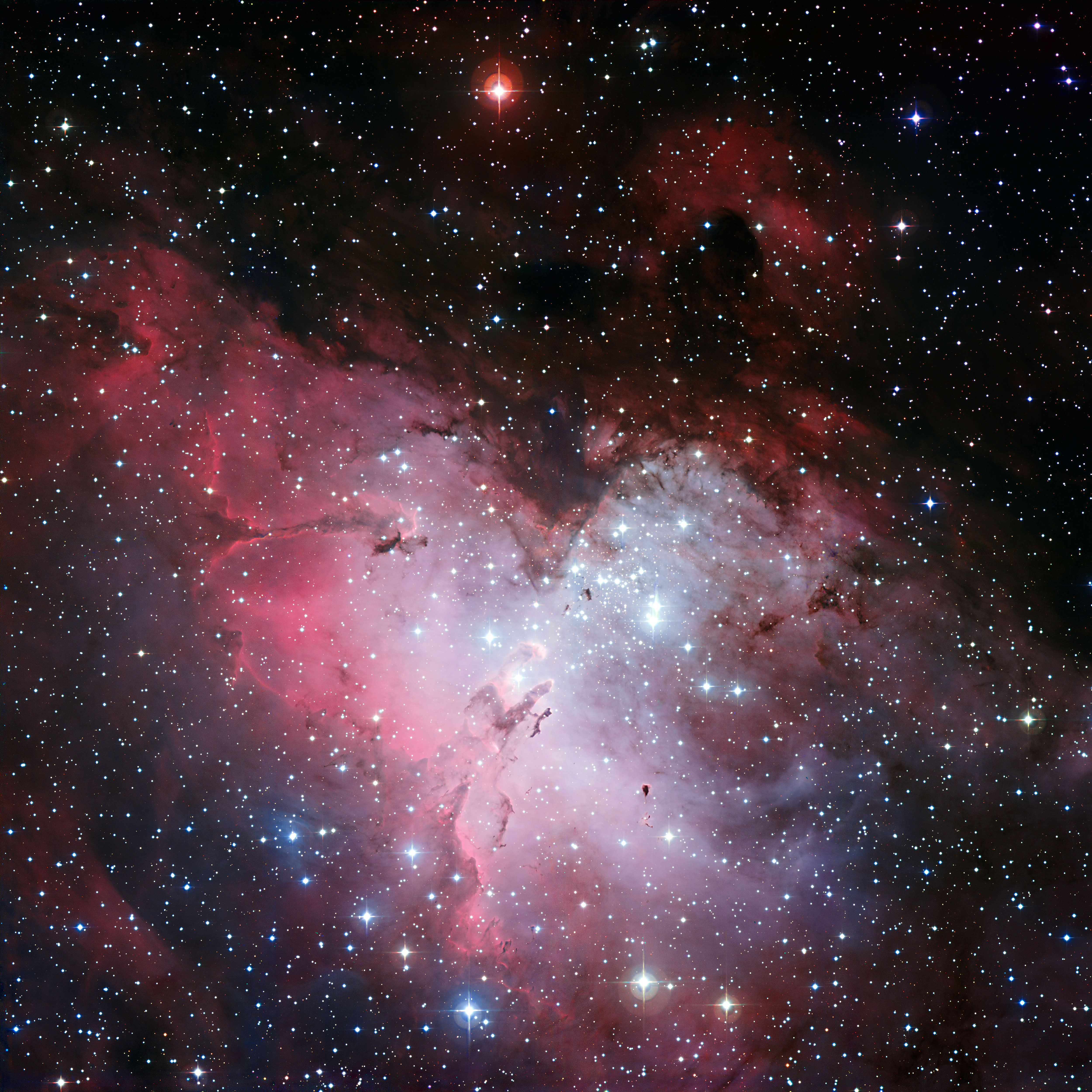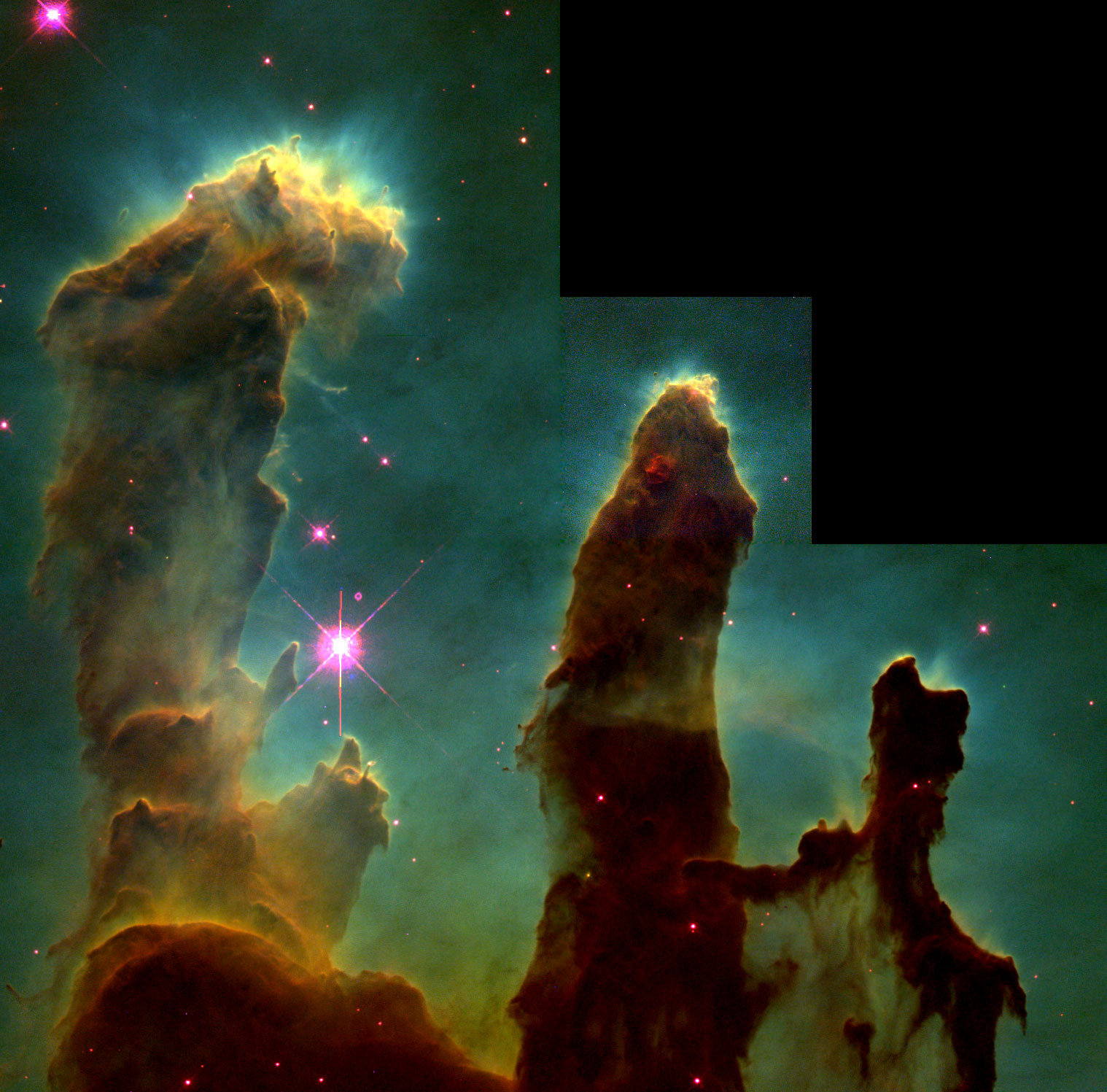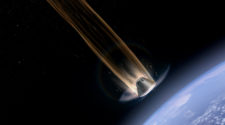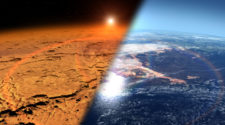
The Eagle Nebula is located in the constellation Serpens and is one of the most iconic star forming regions in our galaxy. The nebula is also known as Messier 16 or M16 in the catalog of celestial nebulas and star clusters compiled by French Astronomer Charles Messier.
This is probably one of the most famous and inspirational nebulas as it was the subject of one of the foremost space images produced by NASA’s Hubble Telescope: The Pillars of Creation. The Pillars of creation is a small part in the center of the nebula that contains star forming hydrogen and dust. I, for one, was introduced to astronomy by this image as I am sure were many others. The Hubble Telescope created inspirational images encouraging thousands of people to look at the night skies in a different way.
The image of the Pillars also introduced the concept of the “Hubble Palette” where different parts of the nebula’s emission spectrum imaged in narrowband are assigned to the red, green and blue channels which make up a normal image. Compare the Pillars of Creation image to the full nebula which was taken using normal RGB. The hydrogen gases can be seen to dominate the main picture, whereas the sodium and oxygen bring out different details in the Pillars of Creation.




